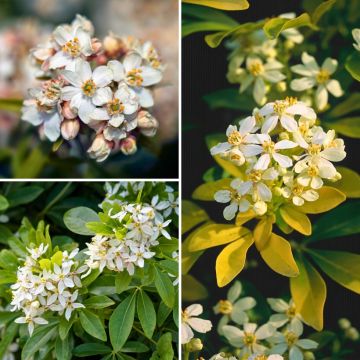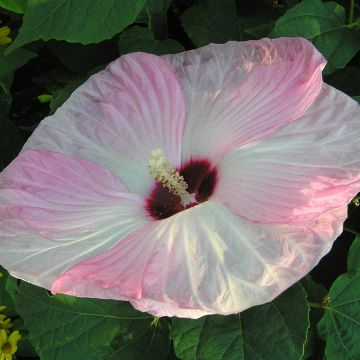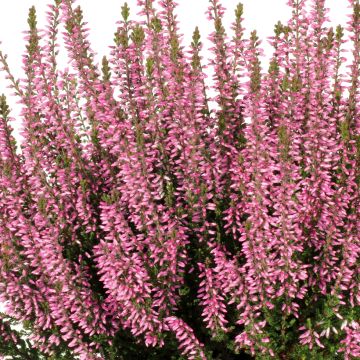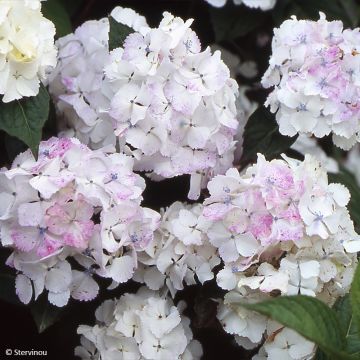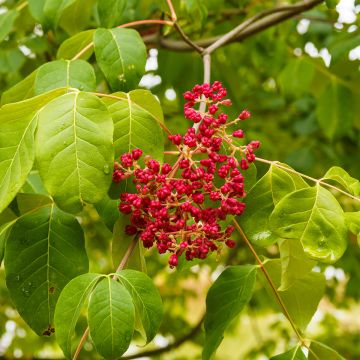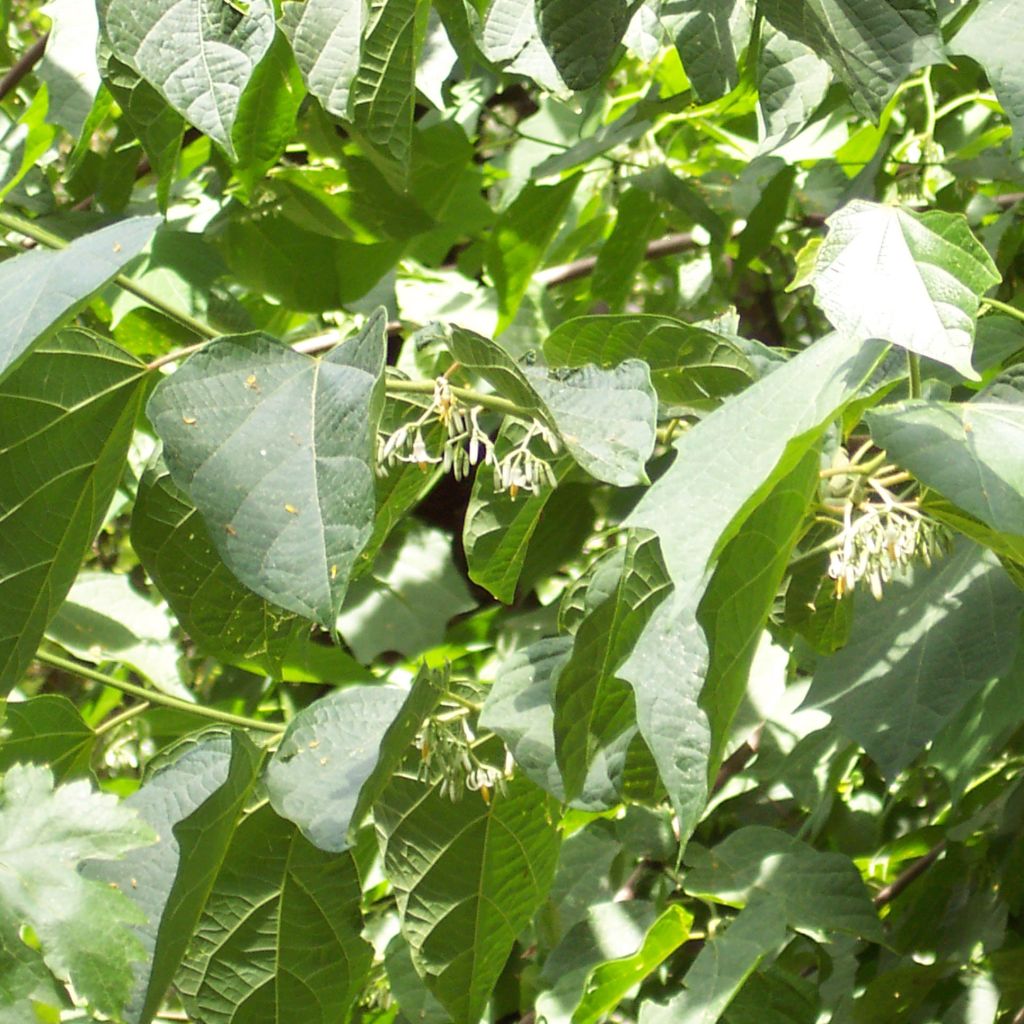

Alangium platanifolium
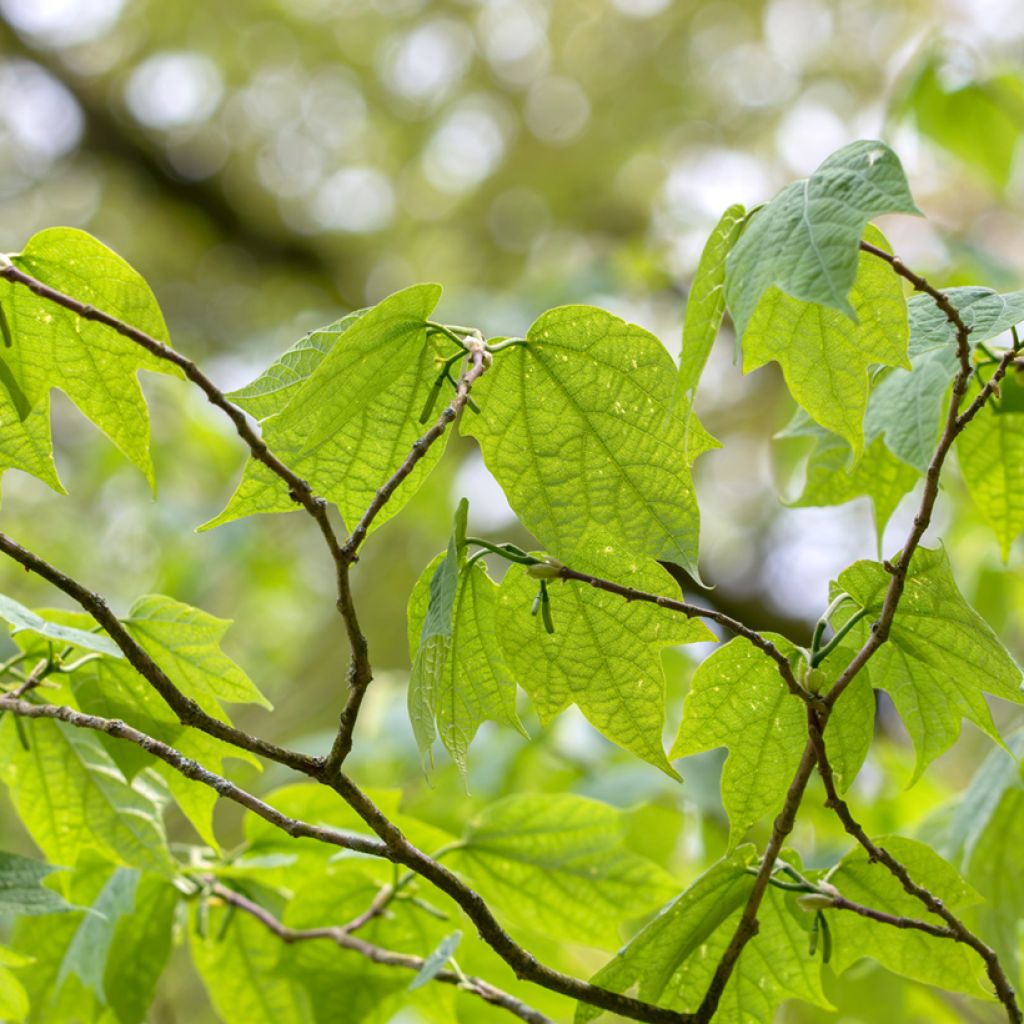

Alangium platanifolium


Alangium platanifolium
Alangium platanifolium
Alangium platanifolium
Very pretty, received in good condition.
Didier D., 11/02/2018
Special offer!
Receive a €20 voucher for any order over €90 (excluding delivery costs, credit notes, and plastic-free options)!
1- Add your favorite plants to your cart.
2- Once you have reached €90, confirm your order (you can even choose the delivery date!).
3- As soon as your order is shipped, you will receive an email containing your voucher code, valid for 3 months (90 days).
Your voucher is unique and can only be used once, for any order with a minimum value of €20, excluding delivery costs.
Can be combined with other current offers, non-divisible and non-refundable.
Why not try an alternative variety in stock?
View all →This plant carries a 24 months recovery warranty
More information
We guarantee the quality of our plants for a full growing cycle, and will replace at our expense any plant that fails to recover under normal climatic and planting conditions.
Would this plant suit my garden?
Set up your Plantfit profile →
Description
Alangium platanifolium is a bush with an exotic appearance, similar to the very polymorphic Alangium chinense, with which it is sometimes confused. This small tree or large bush is distinguished by its slightly smaller size, more bushy habit, and its deeply lobed, particularly elegant deciduous foliage. Its summer blooms are pleasantly fragrant, with clusters of small white flowers resembling tiny lilies. Alangiums thrive in full sun or partial shade, even in the understory. Their rapid growth is an additional asset for plants already endowed with unusual and exuberant foliage.
Alangium platanifolium, sometimes called Marlea platanifolia, is a shrub with variable appearance belonging to the Alangiaceae family. The distribution range of the type species is very limited, confined to Japan in western Honshu, Shikoku, and Kyushu, as well as Korea. It is a pioneer species with fast growth typical of disturbed forests. This large, fast-growing bush will reach a height of 2-3m (6 to 10 ft) and a width of 2m (7 ft) in just 4-5 years. Its habit is broad and rounded, composed of spreading branches. The young twigs are downy, then become glabrous once mature. They bear deciduous, alternate, orbicular, long and wide leaves, 7 to 20 cm (3 to 8 in) long, composed of 3, 5 or even 7 deep lobes, with a cordate base. Their colour is a bright and vibrant green, turning yellow in autumn. The upper surface of the leaves is dark green, the underside lighter. Fragrant flowering occurs in July-August. Small white flowers, 3-3.5cm (1.2 - 1.4 in) long, are grouped in clusters 6 to 8 cm (2 to 3 in) long, in the axils of the leaves. The flowers give rise to small blue-black ribbed fruits, ovoid in shape, not exceeding 1.5 cm (0.6 in) in length, quite decorative.
Alangiums are rarely used in our gardens, despite their willingness to grow and their fragrant flowering. Relatively hardy, this shrub is capable of regrowing from the stump after a -18°C (-0.4 °F) frost and flowering the following summer. It can therefore be used in many regions, especially as it thrives in any good garden soil. It grows quickly, surprising and seducing with its hard-to-describe exotic appearance. It works well as a standalone specimen in a large garden or in front of a more utilitarian evergreen hedge. It could also be paired with a deciduous magnolia (e.g. Magnolia stellata Rosea, M. Star Wars), a Tetrapanax papyfera Rex or a giant canna. It can also be pruned to maintain a bushy habit (while enjoying its remarkable foliage up close!)
Report an error about the product description
Alangium platanifolium in pictures


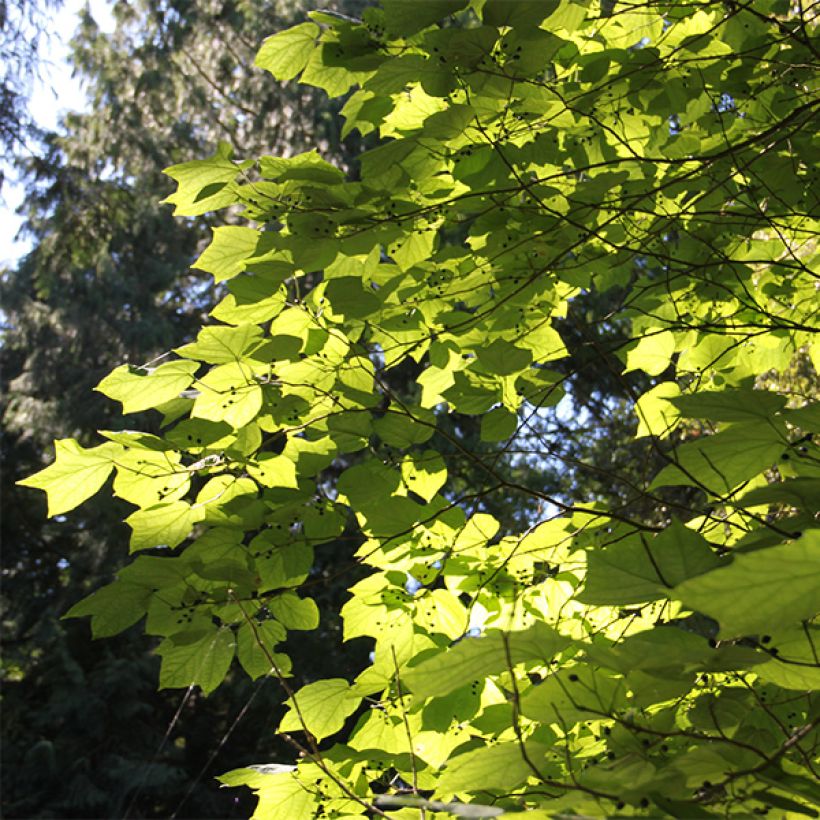

Plant habit
Flowering
Foliage
Botanical data
Alangium
platanifolium
Alangiaceae
Marlea platanifolia
East Asia
Other Alangium
View all →Planting and care
Alangium are in essence hardy forest plants, and as such are not very demanding and can thrive in a well-drained but not too dry soil. Choose a sunny or partially shaded location, or even shady in hot climates. They prefer rather moist, well-drained soils (their roots don't like stagnant humidity) that are rich in humus. This bush is hardier than it appears, and some sources claim that it can withstand severe frosts (down to around -18°C) without damage once established. If the winter were to destroy all its branches, the plant would easily regrow from the stump. Alangium platanifolium can be easily pruned in autumn to maintain a compact bushy shape. It is not susceptible to diseases or pests in European latitudes.
Planting period
Intended location
Care
-
, onOrder confirmed
Reply from on Promesse de fleurs
Similar products
Haven't found what you were looking for?
Hardiness is the lowest winter temperature a plant can endure without suffering serious damage or even dying. However, hardiness is affected by location (a sheltered area, such as a patio), protection (winter cover) and soil type (hardiness is improved by well-drained soil).

Photo Sharing Terms & Conditions
In order to encourage gardeners to interact and share their experiences, Promesse de fleurs offers various media enabling content to be uploaded onto its Site - in particular via the ‘Photo sharing’ module.
The User agrees to refrain from:
- Posting any content that is illegal, prejudicial, insulting, racist, inciteful to hatred, revisionist, contrary to public decency, that infringes on privacy or on the privacy rights of third parties, in particular the publicity rights of persons and goods, intellectual property rights, or the right to privacy.
- Submitting content on behalf of a third party;
- Impersonate the identity of a third party and/or publish any personal information about a third party;
In general, the User undertakes to refrain from any unethical behaviour.
All Content (in particular text, comments, files, images, photos, videos, creative works, etc.), which may be subject to property or intellectual property rights, image or other private rights, shall remain the property of the User, subject to the limited rights granted by the terms of the licence granted by Promesse de fleurs as stated below. Users are at liberty to publish or not to publish such Content on the Site, notably via the ‘Photo Sharing’ facility, and accept that this Content shall be made public and freely accessible, notably on the Internet.
Users further acknowledge, undertake to have ,and guarantee that they hold all necessary rights and permissions to publish such material on the Site, in particular with regard to the legislation in force pertaining to any privacy, property, intellectual property, image, or contractual rights, or rights of any other nature. By publishing such Content on the Site, Users acknowledge accepting full liability as publishers of the Content within the meaning of the law, and grant Promesse de fleurs, free of charge, an inclusive, worldwide licence for the said Content for the entire duration of its publication, including all reproduction, representation, up/downloading, displaying, performing, transmission, and storage rights.
Users also grant permission for their name to be linked to the Content and accept that this link may not always be made available.
By engaging in posting material, Users consent to their Content becoming automatically accessible on the Internet, in particular on other sites and/or blogs and/or web pages of the Promesse de fleurs site, including in particular social pages and the Promesse de fleurs catalogue.
Users may secure the removal of entrusted content free of charge by issuing a simple request via our contact form.
The flowering period indicated on our website applies to countries and regions located in USDA zone 8 (France, the United Kingdom, Ireland, the Netherlands, etc.)
It will vary according to where you live:
- In zones 9 to 10 (Italy, Spain, Greece, etc.), flowering will occur about 2 to 4 weeks earlier.
- In zones 6 to 7 (Germany, Poland, Slovenia, and lower mountainous regions), flowering will be delayed by 2 to 3 weeks.
- In zone 5 (Central Europe, Scandinavia), blooming will be delayed by 3 to 5 weeks.
In temperate climates, pruning of spring-flowering shrubs (forsythia, spireas, etc.) should be done just after flowering.
Pruning of summer-flowering shrubs (Indian Lilac, Perovskia, etc.) can be done in winter or spring.
In cold regions as well as with frost-sensitive plants, avoid pruning too early when severe frosts may still occur.
The planting period indicated on our website applies to countries and regions located in USDA zone 8 (France, United Kingdom, Ireland, Netherlands).
It will vary according to where you live:
- In Mediterranean zones (Marseille, Madrid, Milan, etc.), autumn and winter are the best planting periods.
- In continental zones (Strasbourg, Munich, Vienna, etc.), delay planting by 2 to 3 weeks in spring and bring it forward by 2 to 4 weeks in autumn.
- In mountainous regions (the Alps, Pyrenees, Carpathians, etc.), it is best to plant in late spring (May-June) or late summer (August-September).
The harvesting period indicated on our website applies to countries and regions in USDA zone 8 (France, England, Ireland, the Netherlands).
In colder areas (Scandinavia, Poland, Austria...) fruit and vegetable harvests are likely to be delayed by 3-4 weeks.
In warmer areas (Italy, Spain, Greece, etc.), harvesting will probably take place earlier, depending on weather conditions.
The sowing periods indicated on our website apply to countries and regions within USDA Zone 8 (France, UK, Ireland, Netherlands).
In colder areas (Scandinavia, Poland, Austria...), delay any outdoor sowing by 3-4 weeks, or sow under glass.
In warmer climes (Italy, Spain, Greece, etc.), bring outdoor sowing forward by a few weeks.


































